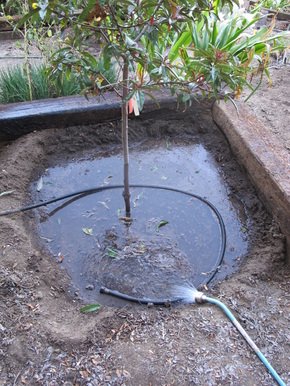
When our drought continued last spring, and my fruit trees planted during the previous two years were surviving but not thriving, I decided to install railroad ties on the downside and sides of the slopes to provide a six-foot-diameter level deep-watering space for each tree. Remaining mature trees had done well enough over the previous 50 years, when we’d had some 15-20 inches of real rain every year (to say nothing of that one year with 40 inches!), but my small two-foot-diameter watering basins that kept sluffing down the slope just weren’t enough with only 4 inches or less of rain. Hence the buttressing. So my trees will now be very happy, with 4-inch-deep berms corralling the water I let flow into their new basins via watering wands that push out a lot of water through tiny holes to avoid blasting the soil. I let the water fill the basin until it reaches the tops of the berms, then shift the hose to another tree. I’ll use a one-foot-long soil probe to test the soil moisture each week, giving each tree another soaking only when the probe indicates mostly dry – Even in my decomposed granite, this means at least 2 weeks in this heat.
Deep watering of the vegetable beds is accomplished by sinking five-gallon nursery containers with bottom holes into the bed almost up to their rims. I water the surface of the soil, and also fill the containers to overflowing. This provides water both to the top two inches of soil and also out the bottom holes, with osmosis enabling meeting somewhere in between, resulting in an always-moist soil profile for seeds and seedlings and mature plants to thrive. And, you can do something else in the garden – like harvesting or weeding – while the hose end is filling the container. During hot summer weather, who wants to just stand there holding the hose?

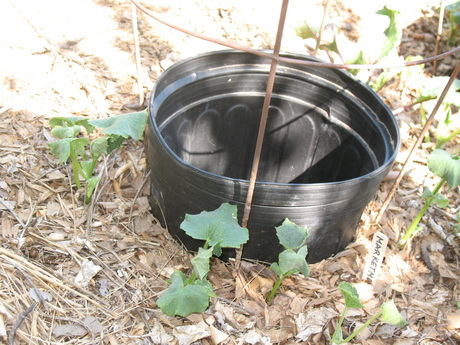
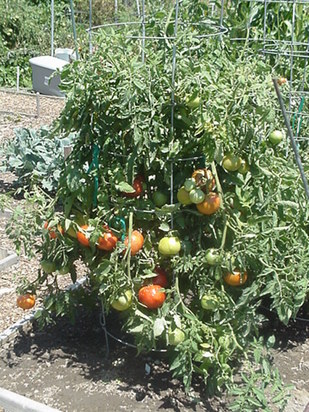
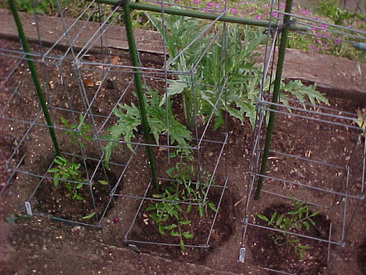
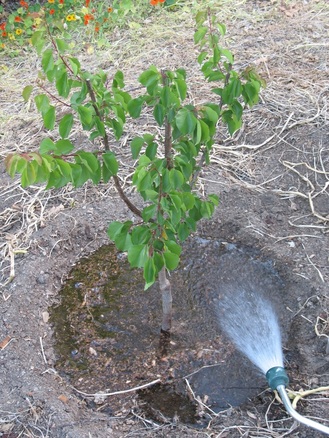
 RSS Feed
RSS Feed